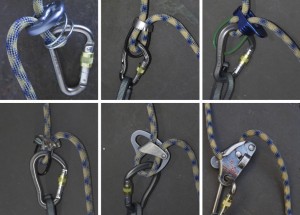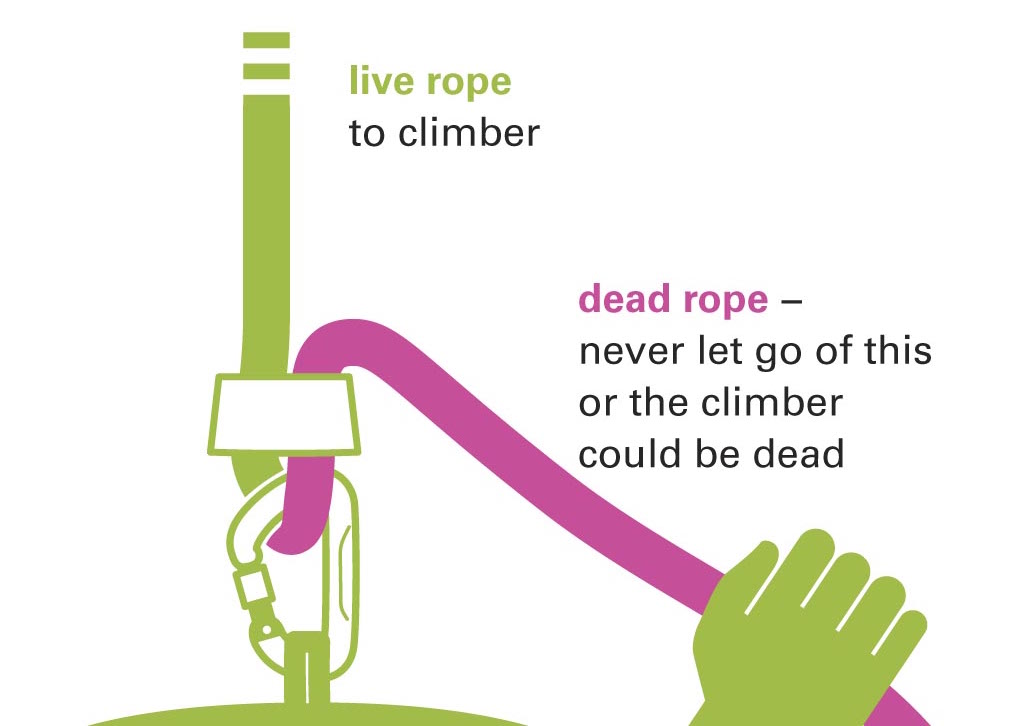The variety of belay devices is seemingly endless. Used correctly any brand or model should be adequate, however some are more slick than others and a few are auto-locking.
Essentially a belay device stems from early stitch plates that were just a piece of metal with a hole in. These developed into sprung stitch plates, and then onto the more common tubular designs, where the greater surface area of metal help dissipate any heat that builds up during a long lower or abseil.
Some more recent advancements are the adding of grooves or offsetting where the karabiner rests. Both designs help add friction to the system, making the device grip the rope harder, easing the locking off of the rope.
There are also some belay plates that can be used in what is referred to as ‘guide-mode’. There are pros and cons of using a device in this way and it is beyond this section of the site to cover this. Generally though unless you are a guide or instructor then this facility is not needed.
Although dubbed ‘auto-locking’ devices like the Petzl Gri-Gri don’t work every time. Generally they will lock the rope in the event of a fall, but you still need to manage the dead rope correctly as they cannot be fully relied on. Auto-locking devices also have the disadvantage of being more compli- cated to lower a climber, and you should read the instructions carefully and practice with a climber close to the ground.

Belay Devices – Plates and Tubes
Most belay devices fit into the generic type, they are design for one or two ropes and require the belayer to be actively involved and concentrating on belaying the climber. These devices essentially create a lot of friction when used correctly to help arrest a fall. They can be used sport or trad climbing and are extremely versatile.
Belay Devices – Auto-locking
Whilst it is technical wrong to call a device auto-locking as non elf the manufactures actually claim this. These devices have a mechanical element that locks down on the rope and arrest a fall. As these devices have a tendency to lock quickly the impact force is greater than a normal belay plate. As such these devices are not recommended for trad climbing as they increase the impact force on the top runner.

